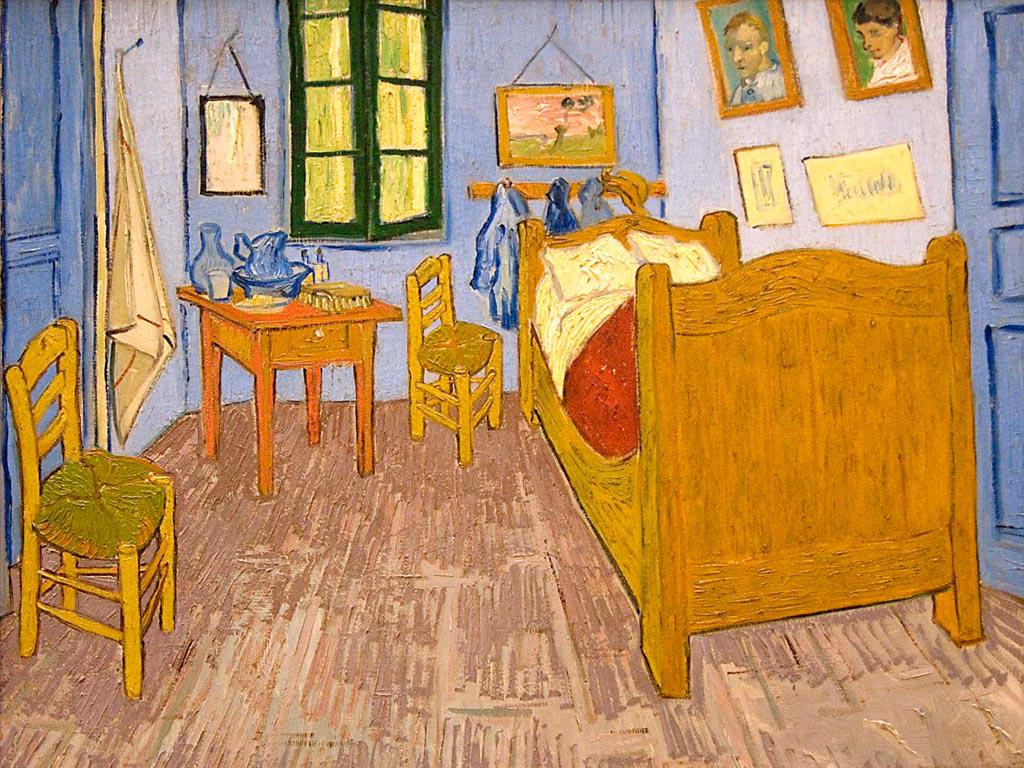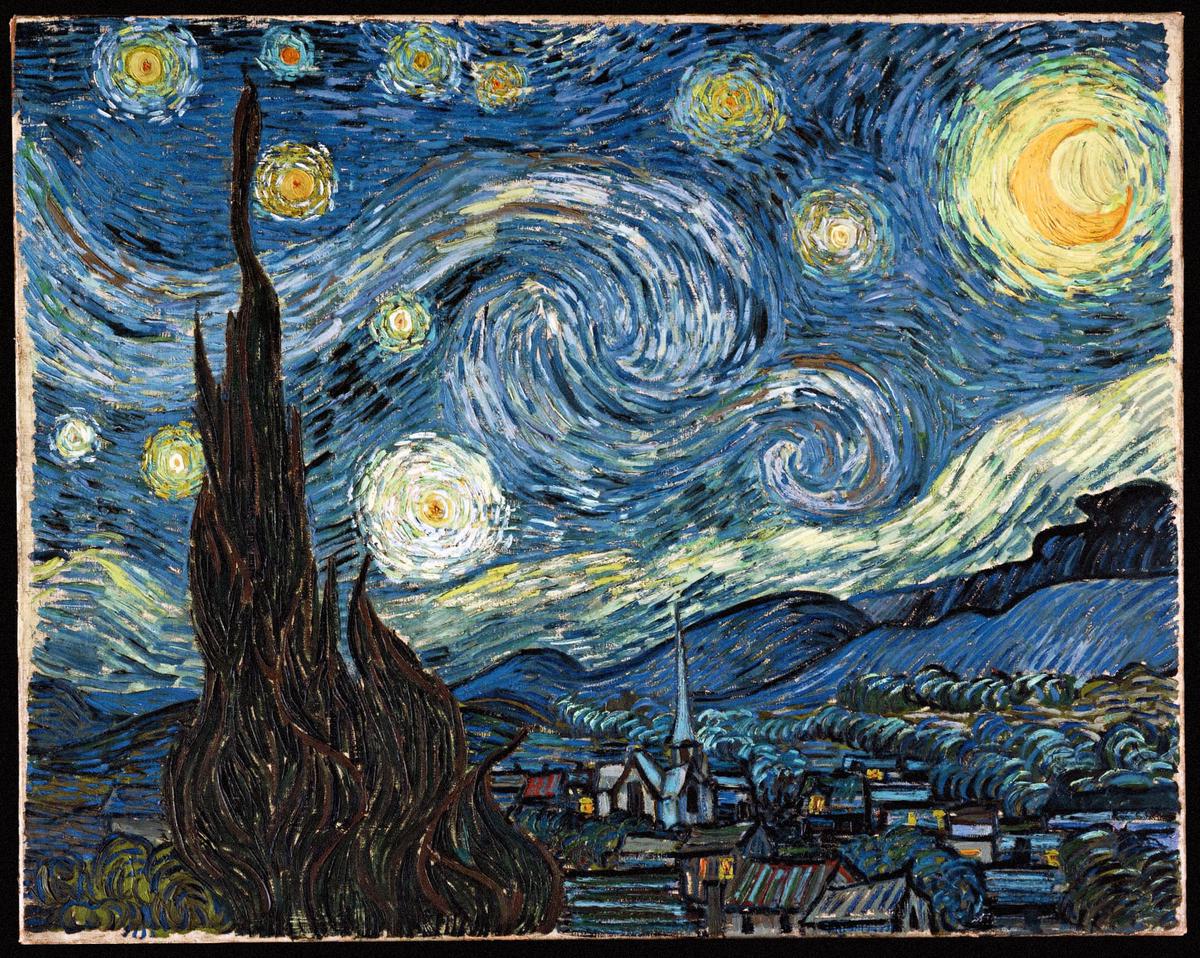Vincent van Gogh's time at the Saint-Paul-de-Mausole asylum was marked by personal struggles and artistic breakthroughs. Amid his mental health challenges, he created The Starry Night – a celebrated painting that reflects his fascination with the night sky, emotional turmoil, and scientific curiosity, captured through unique brushstrokes and vivid colors.
Historical Context and Creation
Vincent van Gogh painted The Starry Night during his stay at the Saint-Paul-de-Mausole asylum in Saint-Rémy-de-Provence. The asylum's environment was both confining and freeing for van Gogh. Though restricted by the institution's walls, he found inspiration in the view from his east-facing window. He painted the iconic scene from memory during the day, finding solace in the night's celestial beauty despite his confinement.
Van Gogh's work echoed the Post-Impressionist style, blending personal emotions with symbolic content. The large cypress tree in the painting, almost reaching the sky, symbolized death and eternity to van Gogh. His brushstrokes weren't merely erratic; they mimicked scientific illustrations of nebulae, inspired by his love for astronomy.
Van Gogh regularly read "L'Astronomie" magazine and infused his work with cosmic precision, aligning stars like Venus to their real-life positions. The swirling patterns in the sky reflect both the artist's inner turmoil and the era's astronomical discoveries.
The peaceful village beneath the turbulent sky was purely imaginative, reflecting van Gogh's homesickness for his native Netherlands. The church, strikingly dark, lacked the comforting glow of the village's homes, perhaps mirroring van Gogh's estrangement from his religious upbringing.
Van Gogh's mental condition fluctuated during his time in the asylum, reflected in the undulating waves of the night sky. The vibrant yet unsettling blues became a motif, mirroring periods of his deep depression. Though his mind was in turmoil, he carefully infused each brushstroke with intention, merging his academic interests with a deeply personal story.

Artistic Techniques and Style
Van Gogh's artistic prowess in The Starry Night extends beyond mere depiction to an evocative dance of techniques and styles. His canvas becomes an exploration of color, form, and movement, creating a visceral experience for the viewer. The dominating blues and yellows are emotional signifiers that communicate the tranquility and turbulence of van Gogh's psyche.
The swirling patterns of the sky are achieved through van Gogh's unique brushstrokes, a departure from the precise dabs of the Impressionists. His strokes are bold and expressive, almost sculpting the paint on the canvas. The short, thick strokes of blue are punctuated by glowing orbs of stars and a crescent moon, rendered in a luminous yellow that contrasts dramatically with the cool background.
Key Techniques in The Starry Night:
- Rhythmic brushwork: Guiding the viewer's eye across the canvas
- Textured application: Thick, almost sculptural paint
- Vivid color contrast: Cool blues against warm yellows
- Dynamic composition: Connecting sky, cypress, and village
The night sky, often associated with darkness and fear, becomes for van Gogh a canvas of vivid colors and undulating forms. The stars and moon are not distant and unattainable but rather within reach, inviting the viewer to contemplate their own relationship with the cosmos.
The cypress tree serves as a connector of worlds, anchoring the ethereal sky to the grounded village. The church's dark, inert façade contrasts starkly with the animation of the sky, perhaps a subtle commentary on van Gogh's own fraught relationship with organized religion.
Symbolism and Interpretation
The various elements in The Starry Night transform it from a landscape painting into a rich collection of meaning and introspection. The cypress tree, towering and almost flame-like, becomes a profound symbol. Traditionally associated with graveyards, the cypress in this painting reaches skyward, as though striving to connect Earth with the heavens. This imagery mirrors van Gogh's personal struggle with mortality and his quest for peace beyond the earthly realm.
The stars capture van Gogh's fascination with the cosmos. These luminous orbs pulse with an intensity that invites viewers to recall van Gogh's own words about stars as destinations accessible through death. The prominent, swirling shapes in the sky may convey the confusion of his mind, yet they also capture a movement and energy that is undeniably life-affirming.
"For my part I know nothing with any certainty, but the sight of the stars makes me dream."
– Vincent van Gogh
The church—standing dark among the brighter village lights—brings another layer of symbolism. Its steeple, reminiscent of Dutch churches, hints at van Gogh's complicated relationship with his religious upbringing. It is conspicuously the only building without lights, perhaps reflecting a sense of isolation or rejection of organized faith.
The entire composition can be seen as a visual representation of van Gogh's internal landscape. The carefully placed stars and undulating sky render chaos into something beautiful and comprehensible. His heavy, deliberate brushstrokes convey not just the texture of the night but the weight of his experiences.
The earthly village below, painted with calmer strokes, stands in contrast to the frenetic energy above it. This division between the terrestrial and celestial could be interpreted as van Gogh's way of dealing with inner dichotomies: the stability he craved versus the volatility he lived with.
In examining The Starry Night, one realizes that every element is imbued with layers of meaning, each stroke of paint a dialogue between van Gogh's inner world and the cosmos he so passionately admired. His ability to use symbolism to translate his personal struggles and philosophical musings into art offers a timeless connection that allows viewers to empathize with his visionary perception.

Scientific and Astronomical Influences
Van Gogh's fascination with the cosmos was rooted in the scientific discoveries of his time. His friendship with astronomer Camille Flammarion and subscription to "L'Astronomie" magazine fueled his interest in the night sky.
The celestial accuracy in "The Starry Night" is remarkable. The bright celestial body left of center is likely Venus, visible in the dawn sky in June 1889. This precision shows van Gogh's scientific awareness – he painted a night sky that matched reality.
The swirling patterns in the painting evoke astronomical phenomena depicted in scientific illustrations of the time. These shapes mirror nebulae and galaxy vortices, blending van Gogh's scientific interests with his artistic vision.
Scientific Influences on Van Gogh's Technique:
- Post-Impressionist movement inspired by color and optics theories
- Short, thick brushstrokes create vibrant sky
- Use of complementary colors reflects color theory
The dynamic forms in "The Starry Night" suggest a universe in constant motion, echoing both scientific knowledge and van Gogh's mental state. The painting becomes more than a night scene; it's a cosmic story that combines astronomical knowledge with personal introspection.
"The Starry Night" bridges scientific inquiry and emotional expression. It offers a vision of the universe that is scientifically grounded yet deeply human, inviting us to ponder our place within its vast expanse.
Legacy and Cultural Impact
"The Starry Night" has left an indelible mark on art and popular culture. Though initially overlooked, it has become an emblem of artistic genius and emotional depth.
The painting's journey to fame began with its acquisition by the Museum of Modern Art in New York in 1941. As art movements like Abstract Expressionism gained traction, van Gogh's emotive style was reassessed, and his influence acknowledged.
"The Starry Night" has inspired countless artists across various mediums. Its themes of turmoil and tranquility have resonated in literature, film, and music.
Don McLean's 1971 song "Vincent" beautifully captures van Gogh's troubled yet brilliant spirit.
In popular culture, the painting's image appears on a wide range of merchandise, making it accessible to all. It has also been the subject of academic discourse, with art historians and scientists alike examining its layers of paint, emotion, and natural patterns.
Modern exhibitions like "Immersive Van Gogh" have brought the painting to life in new ways, allowing viewers to step into van Gogh's world through technology.
The enduring appeal of "The Starry Night" lies in its ability to connect across time and culture. It offers a timeless reflection of the human condition, inviting viewers to explore their own inner landscapes through van Gogh's swirling night sky.
The Starry Night stands as a testament to van Gogh's ability to transform personal anguish into a sublime vision of the cosmos. Through its swirling skies and symbolic elements, the painting continues to resonate deeply with viewers, offering a timeless reflection on the human experience.























